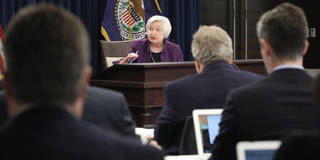A decade after the onset of the global financial crisis, it seems more than appropriate for central bankers to move the levers of policy off their emergency settings. A world in recovery – no matter how anemic it may be – does not require a crisis-like approach to monetary policy.
NEW HAVEN – Three cheers for central banks! That may sound strange coming from someone who has long been critical of the world’s monetary authorities. But I applaud the US Federal Reserve’s long-overdue commitment to the normalization of its policy rate and balance sheet. I say the same for the Bank of England, and for the European Central Bank’s grudging nod in the same direction. The risk, however, is that these moves may be too little too late.
Central banks’ unconventional monetary policies – namely, zero interest rates and massive asset purchases – were put in place in the depths of the 2008-2009 financial crisis. It was an emergency operation, to say the least. With their traditional policy tools all but exhausted, the authorities had to be exceptionally creative in confronting the collapse in financial markets and a looming implosion of the real economy. Central banks, it seemed, had no choice but to opt for the massive liquidity injections known as “quantitative easing.”
This strategy did arrest the free-fall in markets. But it did little to spur meaningful economic recovery. The G7 economies (the United States, Japan, Canada, Germany, the United Kingdom, France, and Italy) have collectively grown at just a 1.8% average annual rate over the 2010-2017 post-crisis period. That is far short of the 3.2% average rebound recorded over comparable eight-year intervals during the two recoveries of the 1980s and the 1990s.

NEW HAVEN – Three cheers for central banks! That may sound strange coming from someone who has long been critical of the world’s monetary authorities. But I applaud the US Federal Reserve’s long-overdue commitment to the normalization of its policy rate and balance sheet. I say the same for the Bank of England, and for the European Central Bank’s grudging nod in the same direction. The risk, however, is that these moves may be too little too late.
Central banks’ unconventional monetary policies – namely, zero interest rates and massive asset purchases – were put in place in the depths of the 2008-2009 financial crisis. It was an emergency operation, to say the least. With their traditional policy tools all but exhausted, the authorities had to be exceptionally creative in confronting the collapse in financial markets and a looming implosion of the real economy. Central banks, it seemed, had no choice but to opt for the massive liquidity injections known as “quantitative easing.”
This strategy did arrest the free-fall in markets. But it did little to spur meaningful economic recovery. The G7 economies (the United States, Japan, Canada, Germany, the United Kingdom, France, and Italy) have collectively grown at just a 1.8% average annual rate over the 2010-2017 post-crisis period. That is far short of the 3.2% average rebound recorded over comparable eight-year intervals during the two recoveries of the 1980s and the 1990s.